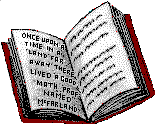[1]
Search the problem for the question (or demand), usually at the end.
"How many apples should Alice buy?"
"Find the number of apples Alice should buy."
|
[2]
|
Invent variables to represent the answer to the question(s).
It may be helpful to invent variables to represent other named quantities. |
"Let x = the number of apples Alice should buy."
|
[3]
|
Draw a picture of any physical features described in the
problem, such as rectangles, paths, containers, or sets.
If several quantities are mentioned, organize the
information in a chart or table. |
|
[4]
|
(The hard step) Using your newly chosen variable(s), translate
the English of the problem into mathematics, phrase by phrase,
sentence by sentence. In our class, the mathematical statement
will usually be an equation or inequality. |
"3x+2=8"
[5]
(The easy part, usually) Solve the mathematically expressed problem.
"x=2"
[6]
Translate the mathematical solution back into English.
"Alice should buy 2 apples"





